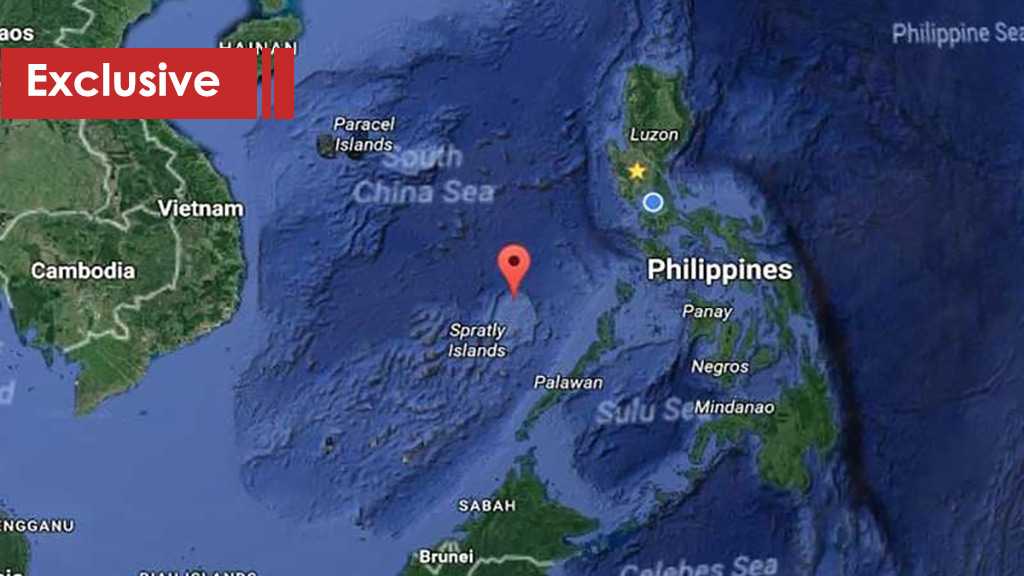
Will China Sea Neighbors Get Along and Face US?

Nour Rida
The China Sea is the dominant term used in English for the marginal sea that is part of the Pacific Ocean but of great importance, and the name in most European languages is equivalent. In China, it is called the "South Sea", Nánh?i, and in Vietnam the "East Sea". In Malaysia, Indonesia and the Philippines, it was long called the "South China Sea". Now despite the naming or the geography, there has always been a player in the spotlight, especially in recent major regional conflicts whether behind the scenes or on the frontlines; the US.
To know more about the sea, it carries tremendous strategic importance; one-third of the world's shipping passes through it carrying over $3 trillion in trade each year. It contains lucrative fisheries that are crucial for the food security of millions in Southeast Asia, and huge oil and gas reserves are believed to lie beneath its seabed. States and territories with borders on the sea (clockwise from north) include: the People's Republic of China, Republic of China (Taiwan), the Philippines, Malaysia, Brunei, Indonesia, Singapore, and Vietnam.
A bloody war sea
In 1949, one of the bloodiest battles in the South China Sea took place. Eight million people were killed because of the conflict, while two million were driven out of their homes.
American troops landed on Inchon port around the same time. Korea had been ruled by foreigners for many years. From 1910 to 1945, Japan controlled this peninsula. Afterwards, this country was divided, where the North was backed by China and the South by the US.
This sea has been the platform of numerous disputes among China and its Southeast Asian neighbors, including Vietnam, the Philippines, Taiwan and Indonesia, and involving extra-regional powers like Japan and the United States. These range from territorial disputes over rocks and islands as well as artificial islands to conflicts over maritime rights to rich fishing grounds, vast hydrocarbon reserves, and critical global shipping routes. However, most dangerous of these disputes is that between China and the United States.
Since the end of the Second World War, the US has been pretending to be a country playing the role of ‘world police’ to help maintain peace in this unpredictable region. However, there is a lot more into that. Peacekeeping, as witnessed throughout history can be a business to make tremendous money through arms race, new industries, and jobs. It is wartime economy. The South China Sea provides cheap resources and labor that the US needs (to ensure prices for US consumers are low), and also accounts for 30% of the total US exports.
US aggression towards China has increased during the past few years. US hard line approach towards China was officially manifested in its December 2017 National Security Strategy that declared China a “strategic competitor” and “revisionist” nation regarding the existing international order.
On May 23 2017, the Pentagon announced it had withdrawn its invitation to China to participate in the 2018 Rim of the Pacific Exercise (RIMPAC) – the world’s largest multinational military exercise. It said China’s behavior [in the South China Sea] is inconsistent with the principles and purposes of the RIMPAC exercise.
Also, Trump’s administration has drawn a security strategy that highlighted countering China's rise and reinforcing the US presence in the Indo-Pacific region, where Beijing and Washington have accused each other of stoking a dangerous military buildup and fought for wider influence.
American power waning
Nevertheless, Admiral Philip S. Davidson, highlighting his written remarks submitted to the United States Senate in March 2018 during his confirmation as chief of the US Indo-Pacific Command (formerly called the US Pacific Command) said that "China is now capable of controlling the South China Sea in all scenarios short of war with the United States… There is no guarantee that the United States would win a future conflict with China.”
China’s Navy became the largest in the world in 2017, and Davidson admitted that. China had 317 warships and submarines in active service, surpassing the US Navy’s 283 total war vessels. Thus, after China became the world’s second biggest economy next to the US a few years back, it has now emerged as having the largest naval force.
It’s not just the absolute bigger number of war vessels that China has built over America’s that has caused the latter’s deep concern. It’s also the speed with which China has been building up and modernizing its naval capabilities to “face off against the United States.”
To China, the placement of “defensive” weapons constitutes an exercise of its right to self-defense. In Beijing’s view, the US has clearly militarized the region with its forward-deployed troops, assets and patrols, bolstered by the “rebalance” of its defense forces.
In June 2018, China’s foreign ministry spokeswoman Hua Chunying said that “those who seek and indulge in hegemony will always think that others are coveting their own hegemony”.
These words were in response to US commander, Admiral Harry Harris, who had said on May 30 that "without focused involvement and engagement by the United States and our allies and partners, China will realize its dream of hegemony in Asia.”
Hua also pointed out that “The United States military presence in the South China Sea is greater than that of China and other countries that surround the seas combined,” and that “China indeed objects to what it perceives as US abuse of freedom of navigation and intimidation and coercion in enforcing its interpretation.
Most recently, Beijing has lodged a strong protest to London after a British Royal Navy warship sailed close to islands claimed by China in the South China Sea late last month, warning the UK to end such “provocations,” which it said were harming bilateral relations.
According to sources, Chinese People's University expert Wang Yiwei said that the British warship’s unauthorized passage near the Xisha Islands reflected London’s maritime ambitions that the United States is trying to use to inflame tensions around China in the South China Sea.
China's Ministry of Foreign Affairs said in a statement on September 6 that "China strongly urges the British side to immediately stop such provocative actions, to avoid harming the broader picture of bilateral relations and regional peace and stability," the ministry added, according to Reuters. "China will continue to take all necessary measures to defend its sovereignty and security."
Neighbors getting together?
Now despite US incentives, threats, and pressure, US allies Australia, Japan, and the Philippines have so far declined US requests to join its freedom of navigation operations in the South China Sea against China’s claims. Indonesia has expressed disapproval over such US “power projection” in the area. US relations with Thailand have not been close since the military coup there in 2014 and Bangkok seems to be leaning toward China. Malaysia-US relations have been fragile since the United States took a legal interest in Prime Minister Najib Razak’s international financial dealings. Even staunch US strategic partner Singapore seems to be seeking a more neutral position between Washington and Beijing.
In light of continuous US provocations and breach of Chinese sovereignty, there remains a question whether the neighbors of the China Sea will unite together and disallow further US intervention or not.
Source: Al-Ahed News



